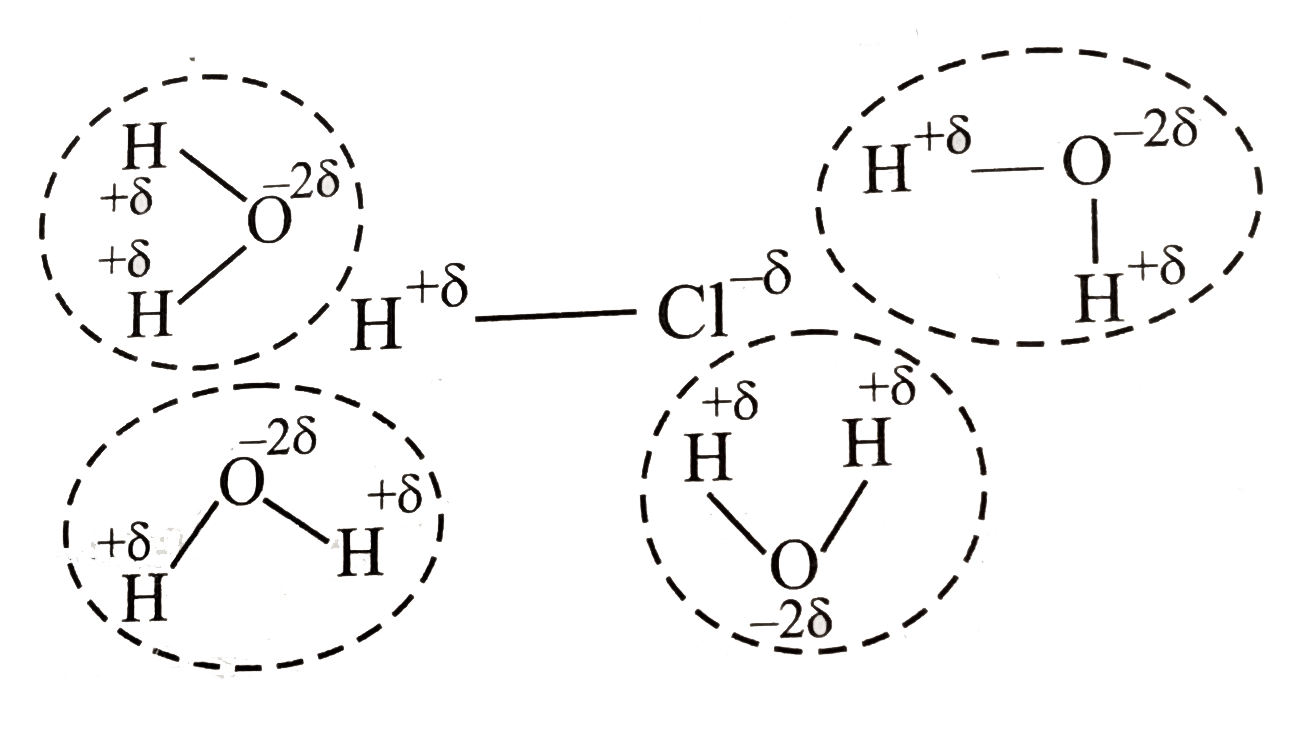Why is HCl predominantly covalent in the gaseous state but ionic in the aqueous solution?
HCl is predominantly covalent in gaseous state, since EN difference between CI and H atom is (3.0−2.1)=0.9. However, being a polar molecule (H+δ−Cl−δ), when dissolved in H2O, the polar H2O molecule interacts with HCl molecule as follows:

As a result, the bond between H and Cl is broken and hydrated H⊕aq and Clөaq is obtained in the solution.
Topper's Solved these Questions
- APPENDIX - INORGANIC VOLUME 1BOOK - CENGAGE CHEMISTRY ENGLISHCHAPTER - APPENDIX - INORGANIC VOLUME 1EXERCISE - chapter-2 Multiple correct answer
2 Videos
- APPENDIX - INORGANIC VOLUME 1BOOK - CENGAGE CHEMISTRY ENGLISHCHAPTER - APPENDIX - INORGANIC VOLUME 1EXERCISE - chapter-2 Single correct answer
3 Videos
- APPENDIX - INORGANIC VOLUME 1BOOK - CENGAGE CHEMISTRY ENGLISHCHAPTER - APPENDIX - INORGANIC VOLUME 1EXERCISE - Exercise very short
70 Videos
- ALKYNESBOOK - CENGAGE CHEMISTRY ENGLISHCHAPTER - ALKYNESEXERCISE - Exercises (Archives - Analytical and Desriptive Type)
4 Videos
- ATOMIC STRUCTUREBOOK - CENGAGE CHEMISTRY ENGLISHCHAPTER - ATOMIC STRUCTUREEXERCISE - Concept Applicationexercise(4.3)
19 Videos
Similar Questions
The compound is covalent in gaseous state but ionic in solid state is.
View SolutionThe seqeunce of ionic mobility in the aqueous solution is
View SolutionGive reason :
Ammonia is unionised in the gaseous state but in the aqueous solution is a weak electrolyte
View SolutionA covalent gas which behaves as good conductor in aqueous solution.
View SolutionThe sequence of ionic mobility in aqueous solutions is -
View SolutionIn gaseous state, ionic character is greatest in
View SolutionExplain why :
sodium chloride does not conduct electricity in the solid state but conduct in the fused state or in aqueous solution
View SolutionName the ions obtained when HCl dissociates in aqueous solution .
View SolutionExplain why Cu+ ion is not stable in aqueous solutions ?
View SolutionAssertion : PCl5 is covalent in gaseous and liquid state but ionic in solid state.
Reason: PCl5 in solid state consists of tetrahedral PCl+4 cation
and octahedral PCl−6 anion.
View Solution
